
205
“205" specifies the tyre’s nominal width in millimetres.
Different tyre widths match different rim widths.
Generally speaking, the wider the tyre, the better the grip, but the fuel consumption will increase. The narrower the tyre, the less resistance, but the handling will be less effective.
55.5
The number “55" refers to the nominal aspect ratio, i.e. the ratio of the tyre’s height to its width. In this case, the height of the sidewall is 55 percent of the nominal width.
Lower aspect ratio typically indicates better handling performance. Tyres with a higher aspect ratio improve ride comfort. You make a compromise between two things.
R16
The abbreviation “R" stands for “Radial". In radial tyres, the separate cords of the casing lie transverse to the direction of travel. If there is a B in the size, it stands for "bias".
The number “16” in the size data refers to the rim diameter in inches (1 inch = 2.54 cm).
This number must match the rim diameter of the vehicle.
91
“91” is the tyre’s load index (LI). In the present example, this means that a tyre can be loaded with a maximum of 615 kilograms. If the load exceeds this value, there will be safety hazards. Here is a standard conversion table for converting this numerical code to the maximum tyre load. (See below)

W
The speed symbol “W” – indicating the maximum permissible speed. In this case, the tyre is W-rated, i.e. approved for speeds of up to 270 km/h. A tyre’s certified speed rating is given a letter from A to Z. The higher the speed rating, the better control and handling you’ll have at higher speeds. Check out for the rating system (see below).

Tread
The tread is the part of the tyre that makes contact with the surface of the road. Taken together, the materials, ribs, grooves, tread blocks, and sipes can be arranged in a unique pattern to modulate the tyre's performance in critical areas like noise, water evacuation, handling, traction, and wear.
Sidewall
The sidewall is the most vulnerable part of the tyre.
Compared to the tread, the sidewall is not only thinner, but also has insufficient steel wire to adhere. It helps to support the tyre and absorb shock. Once damaged, the tyre will have to be scrapped.
Another function of the sidewall is to carry valuable tyre information. For example, brand, nominal width, aspect ratio, manufactured date, etc.
Shoulder
The tyre shoulder is the portion of the tread between the tread center and the tyre sidewall.
The tyre shoulder offers support and protection to both the sidewall and the tread. The shoulder is one of the thickest parts of the tyre, enabling the tyre to more easily hold its form during cornering maneuvers. Certain high performance tyre shoulders are specially designed to help tyres maneuver more easily through extreme turns.
Bead
The tyre bead is a rubber-coated loop of high-strength steel cable that allows a tyre to stay "seated" on a rim.
The overall purpose of tyre beads is to firmly adhere the tyre to the outer surface of the wheel. It does this by using the pressure from the wires to sturdily mold the rubber to the wheel’s frame. The bead forms an airtight seal against the wheel and allows for a more efficient transfer of forces as the car moves. Therefore it must have a high strength structure.
If the tyre is removed from the rim multiple times, it will have a negative impact on the bead.
This is the external structure of the tyre and what its parts do.
Each part plays its own important role, making the whole tyre perform to the fullest.
Steel Belts
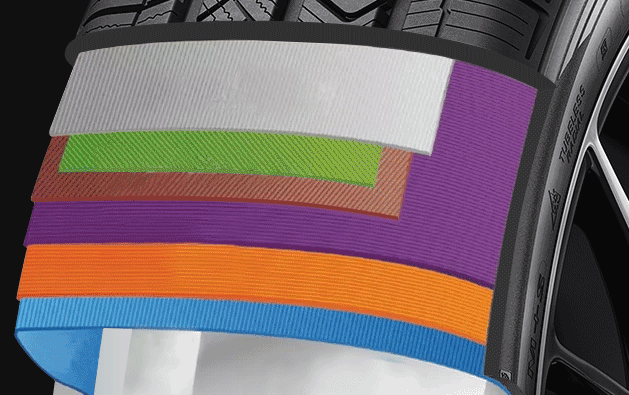
The steel belts are the rigid base for the tread, which largely determines the strength of the tire and the contour after inflation. Belts provide stability to the tread area of the tire, which contributes to wear, speed and handling.
Body Ply
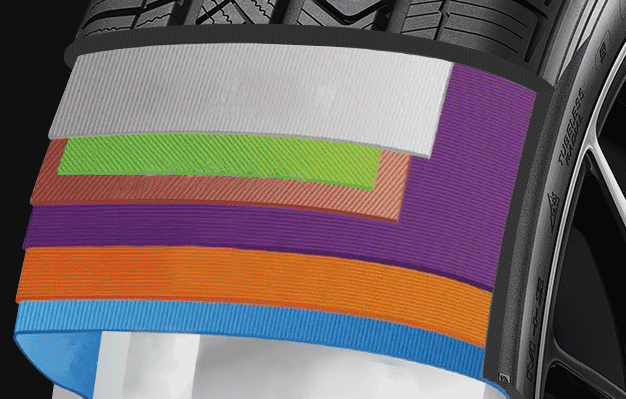
The body ply is the skeleton of the tire. Each body ply is typically comprised of polyester, rayon, or nylon cords within a rubber layer. Body plies function as the structure of the tire and provide the strength to contain the inflation pressure. This is also the last line of protection. Once the body ply is damaged, the tire must be replaced.
Nylon Cap Ply
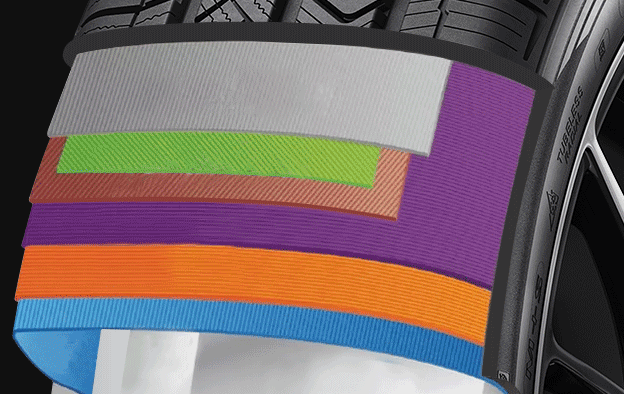
Cap ply is between the tread and the steel belt. It is used to fix the steel belt and protect the steel belt against displacement, so as to ensure high speed impact resistance and steering stability.
Breaker Strips
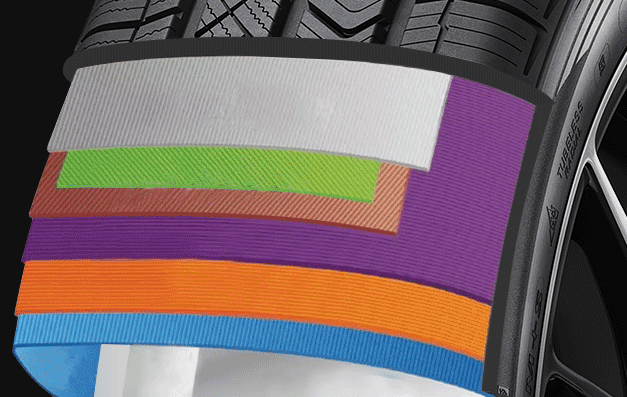
Breaker strips are fabric plies placed directly on the upper-most ply beneath the tread rubber. They disperse stress throughout the tire.
Inner Liner
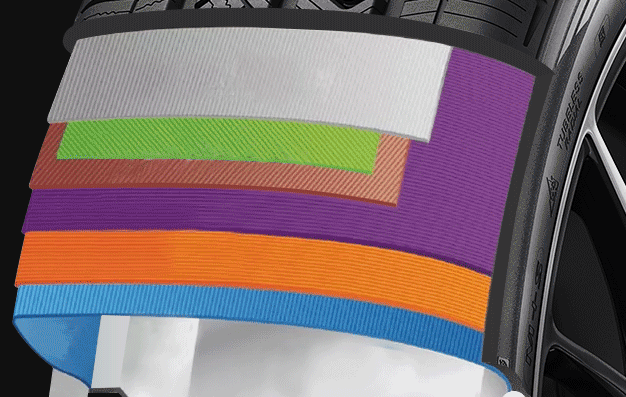
The innermost layer of a tire, starting on the inside, is the inner liner. It is a thin air-tight layer of synthetic rubber designed to keep the air inside the tire. A good inner liner will help maintain your tire pressure which will help you get better fuel economy and lengthen the life of your tires.
Apex
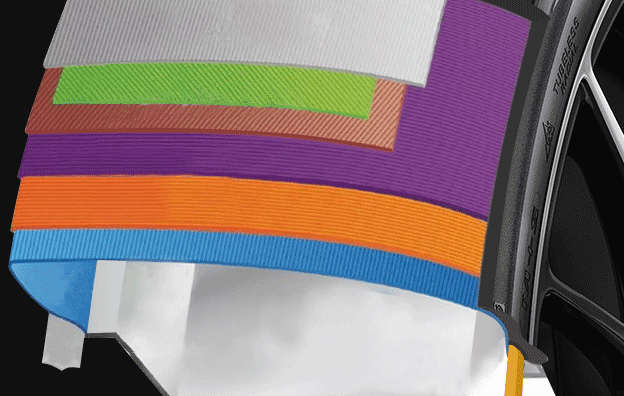
A rubber compound placed above the bead bundle that may be used between the body plies which wrap around the bead to prevent the tire from being deformed, so as to avoid air leakage.
Tyres may simply look like a round piece of rubber, but there are many different components that work together to achieve a common goal of delivering the desired performance. Once there is a problem with a certain component, the performance will be greatly affected and the safety will not be guaranteed.
Rim protectors do what their name suggests: they protect the rims.
Tyres with A Rim Protector
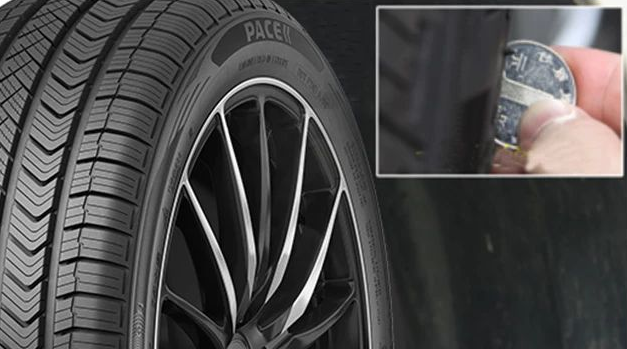
They're strips of plastic or rubber that fit across the edge of the rims to prevent damage that can occur when catching the curb.
Tyres without A Rim Protector
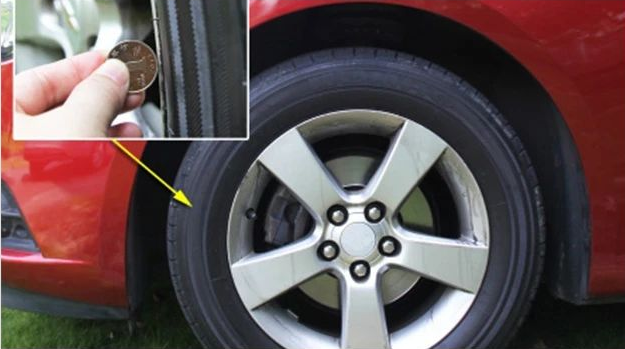
There is no additional layer of reinforced rubber located in the contact area of the tyre and the wheel. The soft sidewall will not help to minimize impact when parking or overcoming high curbs, so that the wheel gets damaged very easily.
The Benefits of Tyres with A Rim Protector?
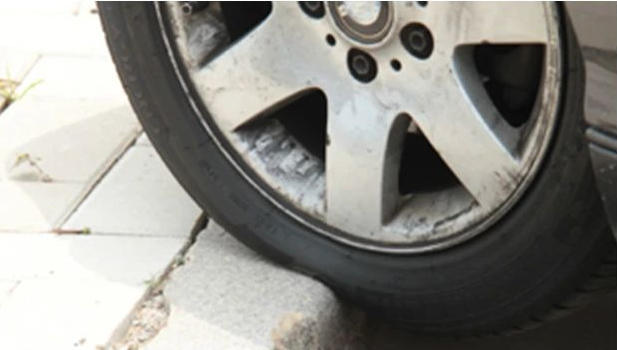
1. Protect the Rim from Damage
The tire bead holds the tire firmly on the rim by pressing against the rim flange, the outwardly curved edge of the rim. So if you get too close to a curb with the tires, the rim rib can protect it from damage by absorbing most of the impact.
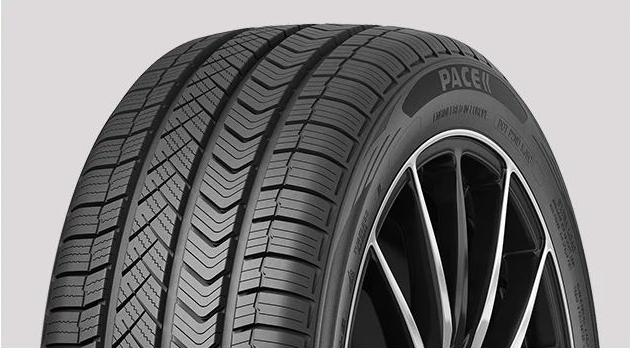
2. Nice Appearance
Tires with rim protection are made of stiffer rubber for rigid sidewall, resulting a better-looking square shape between the sidewalls and tread.
Vehicles: For All Vehicle Models

Since the sidewall rigidity of the tire with rim protection is far less than that of the sidewall of the run-flat tire, the requirements for the shock absorption system of the vehicle are not high, so that rim protectors can be fitted to all vehicles types.
The rim protector can prevent damage to the rim, but drivers should try to avoid straying too close to the curb. Depending on the severity of the damage to your rims, it can cause a number of other issues, such as damage to the tyre body ply and steel belt and even big problems with driving safety.
3T Indicators of Tyres really matters when choosing tires for your vehicle.
1. TREADWEAR
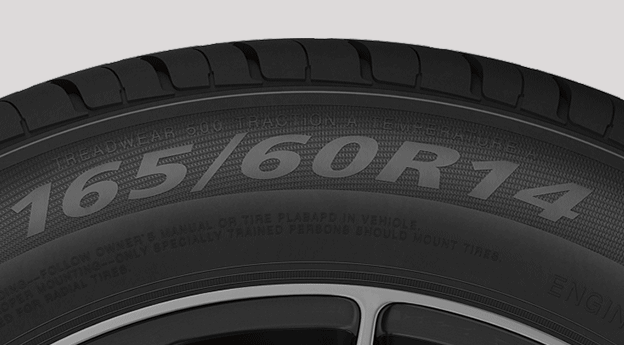
The treadwear rating is a relative measurement of the tire’s durability and tread life. The higher the number the longer the tire should last compared to similar tires from the same manufacture with lower numbers.
2. TRACTION
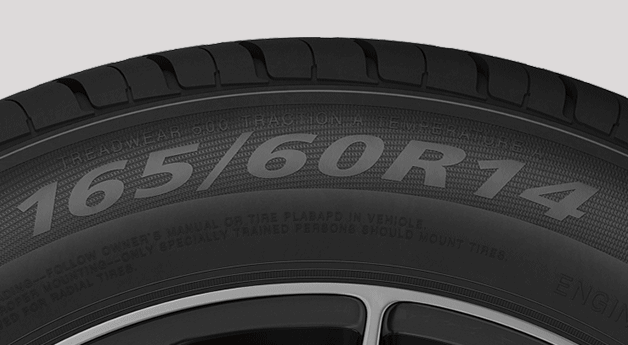
Traction affects a vehicle’s handling and braking performance. The higher the traction rating, the better ability to start and stop on a straight surface under controlled conditions.
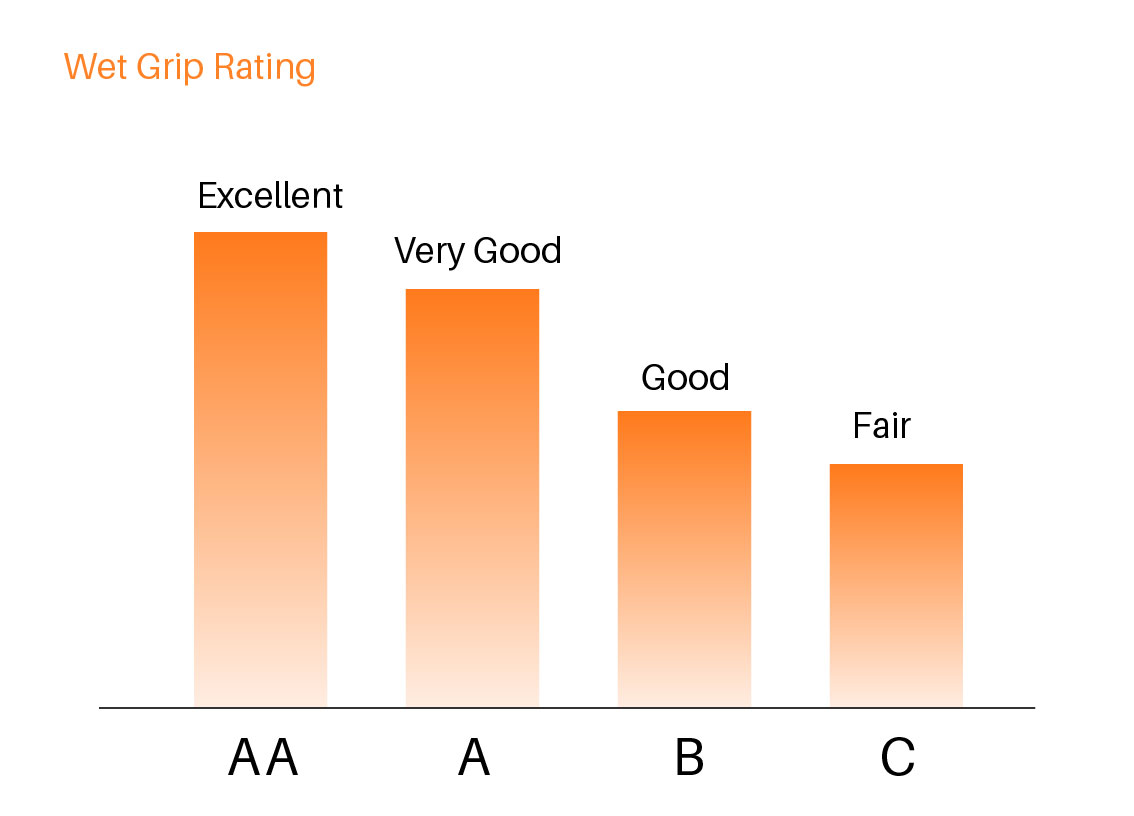
Traction is graded from highest to lowest as "AA", "A", "B", and "C". For better daily driving performance, a tyre with at least A grade is recommended.
3. TEMPERATURE
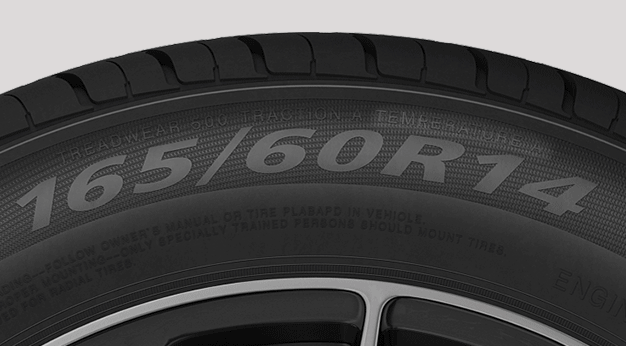
The temperature rating is a measurement of a tire’s resistance to heat generation under normal operating conditions at recommended inflation pressures, which is very crucial to the high-speed performance. Temperature grades range from A to C, with A being highest rated and therefore most resistant to heat generation.
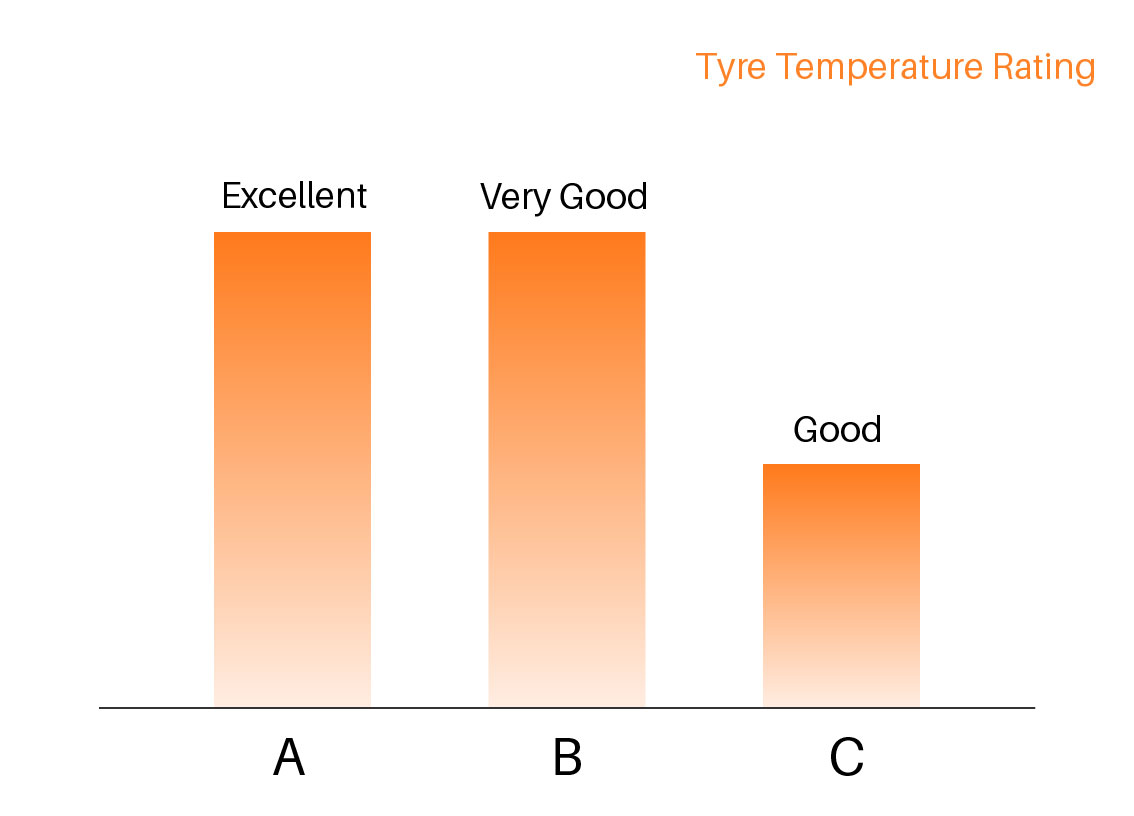
When buying tires, we should pay attention to the TEMPERATURE grade and choose tires with good heat dissipation.
For the 3T Indicators, every indicator on the tire matters. Being tirewise will help you better choose the tires.
A tire's maximum inflation pressure and maximum load index can be found on the sidewall.
Maximum Inflation Pressure
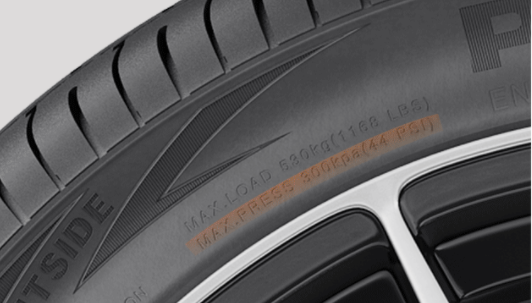
The International GBT 2978-2008 Standard specifies the inflation pressure requirements for car tires:
Standard tire: 2.4-2.5bar
Reinforced tires: 2.8-2.9bar
Maximum inflation pressure: 3.5bar
The standard tire pressure for each car is subject to the manufacturer's recommended value.
This is because the tire pressure is based on your vehicle’s total weight and size, towing weight capability, and the height of the chassis.
It has nothing to do with the brand of tires used.
Maximum Load Index
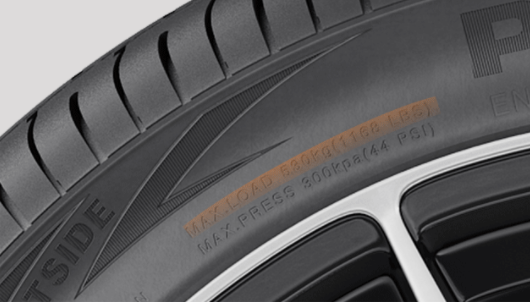
Tire load index refers to how much weight each tire can support safely based on the right tire size and pressure.
The weight is in kilogram. Different load index meansdifferent load capacity.
In the chart below, if a tire has a load index of 126, it can support 1,700kg at maximum air pressure.
Using The Tire Load Index Chart:

When you put too much weight on your tires, you can cause damage and wear them down prematurely. Even worse, you run the risk of experiencing a tire blowout.Never install tires with a lower load carrying capacity than the original tires that were factory installed on your vehicle or exceed the maximum inflation pressure specified by the standard.
The Yellow Dots —The Lightest Point On A Tyre
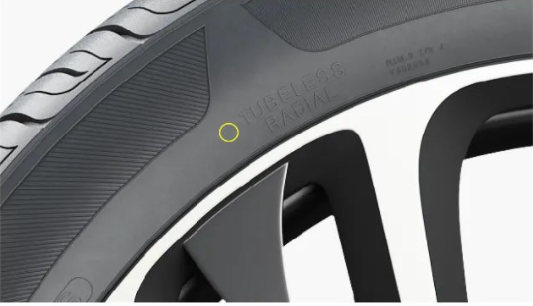
The yellow dots identify where a tyre weighs the least — the lightest point on a tyre. The yellow dot should be lined up and directly next to the valve stem, which is the wheel’s heaviest point, so as to achieve wheel balancing.
The Red Dots — The Lowest Point On A Tyre
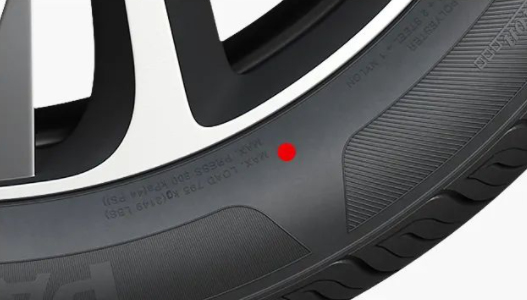
The red dots identify where the tyre is flattest — the lowest point on a tyre. The red dot should be directly across from the highest point of the wheel, which is usually indicated by a colored dot or a notch on the wheel.
These dots guide the technician to make sure that the tyre is properly balanced during installation.By lining up the lightest point with the heaviest, you help balance out the weight differences and make tyres roll smoothly.Properly balanced tyres and wheels are critical to driving comfort and safety, and those paint dots help make that happen.
Symmetrical Tire Tread Pattern
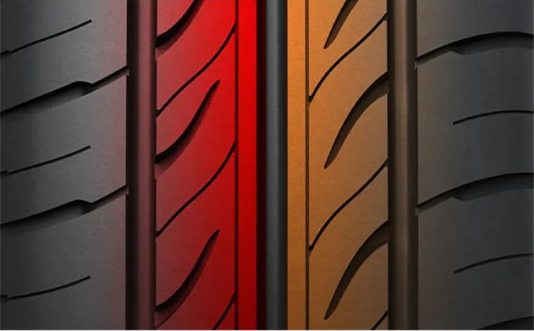
Tires with this design have continuous ribs or independent tread blocks across the entire face of the tread, and both halves of the tire feature the same pattern.
The most common type of tread pattern, the symmetrical variety feature a pattern of continuous grooves or blocks across the entire tyre. Often found on city and compact cars, they tend to come in smaller sizes in the region of 12-15 inches, while they can also be very effective for cars that only have to drive short distances.
Pros:
Low rolling resistance, fuel-efficient, quiet, comfortable, durable
Cons:
Weaker grip,not for high-performance use.
Mounting
It can be fitted either way round and be rotated without any risk of error.
However, in order to help the owner to check the expiration date of the tire, it should be installed with the production date side facing out.
Asymmetric Tire Tread Pattern
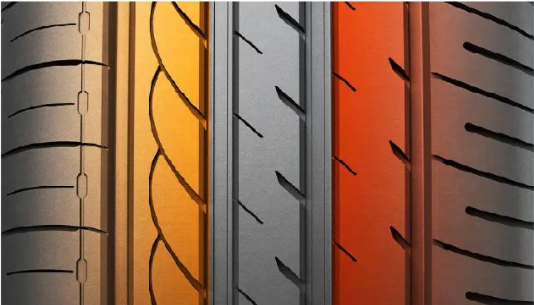
As the name suggests, asymmetrical tyres have different tread patterns on their inner and outer sides of the tyre, with each pattern serving a different, but important, purpose.
Pros:
Good grip, outstanding sport performance and aquaplaning resistance
Cons:
Large pattern block generateshigher noise, so the acoustic comfort is poor.
Mounting
The tires can rotate in either direction when mounted with the correct side facing out, as indicated on the tire sidewall.Make sure your tires have been mounted correctly with the outside mounted to outside.
Directional Tire Tread Pattern
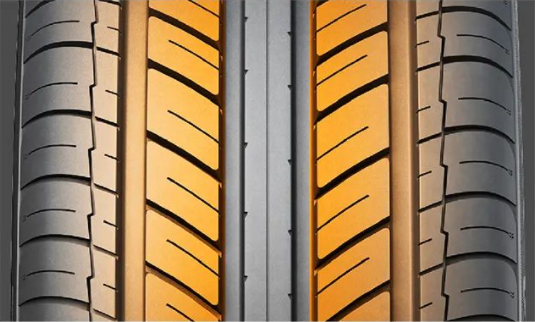
A tire with a directional tread pattern is designed to roll forward in one direction only. It has lateral grooves that meet in the middle of the tire tread, resembling the shape of an arrowhead.
Pros:
Low rolling resistance, higher speed level, good handling performance
Cons:
Noisy, not suitable as a spare tire
Mounting
It can be fitted on either wheel, but we must have them remounted to roll in the proper direction.There is an arrow mark on the tire toindicate the rolling directionandanEnglish word "Rotation" to indicate the direction of the tyre rotation.
The rolling direction of the tire pointed by the arrow should be consistent with the driving direction of the vehicle.
To help you find the right tire, it’s important to understand what kind of tires you have and their proper mounting, otherwise your tires may not perform their intended functions as well as originally designed.
I wanna install wider tyres in my car to get a sporty look! However, car tyre upgrades is not that simple. If you end up miscalculating the tyre size for your car, then it may lead to serious issues related to performance, safety and fuel consumption. We will touch upon those factors in the following sections.
The Benefits of Tyre Upsize
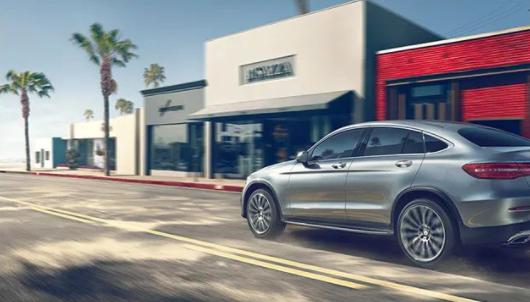
Shorter braking distances and improved grip
Improved high-speed stability and handling
Sporty and fashionable look
How to calculate?
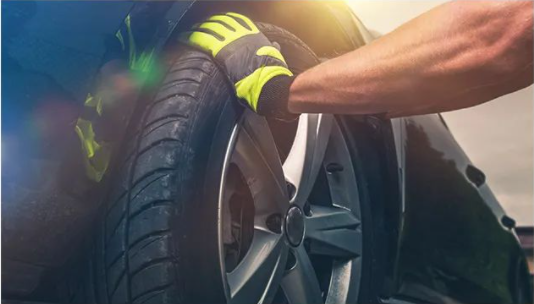
You must ensure the OD (overall diameter) of the new tyres remains within the permissible tolerance, which is only up to 3% of the OD of stock tyre.
For example, if the size of the stock tyre is 185/60R15, then can it be upsized to 195/50R16?
Before Upsizing(185/60R15):
185×60%×2+15×25.4=603mm
After Upsizing(195/50R16):
195×50%×2+16×25.4=601.4mm
OD Difference:603-601.4=1.6mm
OD Difference in Percentage:1.6/603=0.27%<3%
The answer is yes!
There are two ways to do upsizing calculations:
1. Upgrading to wider tyres while retaining the original wheels
Add 10, Reduce 5, Same Size
For every 10 mm increase in tyre width, the sidewall height needs to be reduced by 5 percent.Since we are not modifying the wheels, the size remains the same.
For example, the maximum upsize limit for a stock tyre of 195/70R15 would be 205/65R15.
2. Upgrading to larger wheels/alloy wheels
Add 10, Reduce 10, Increase 1
For every 10 mm increase in tyre width, the sidewall height needs to be reduced by 10 percent.The wheels size increases 1 inch.
For example, the maximum upsize limit for a stock tyre of 195/65R15 would be 205/55R16.
Get the upsizing through the above formula, and then calculate the overall height.It’s good if the difference between the new height and the original height is less than 8mm.
The Overall Height Calculation:
Tire section width × aspect ratio × 2 + rim diameter × 25.4mm
Take 195/65R15 as an example:
195mm×0.65×2+15×25.4mm=overall height of the tire
That’s all for the benefits of tire upgrades and how to upgrade. After upsizing, you should do dynamic balance and get used to the performance of new tires before driving at high speed.
The Benefits of Tyre Rotation
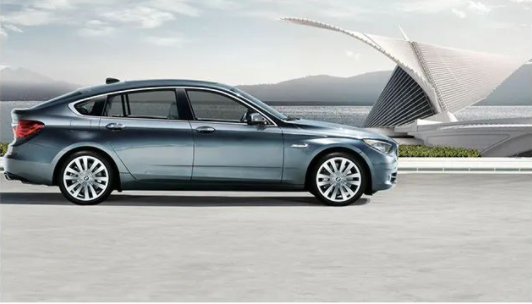
Ensure tires wear evenly
Extend tire life
Improve tire performance
Ensure driving safety
4 Tyre Rotation Methods
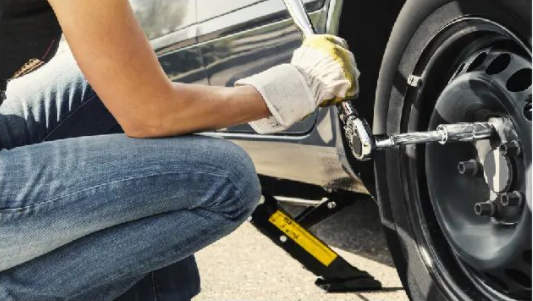
The tire rotation should be based on the center of gravity of the car and the drive wheel tires to determine the order of rotation.
Front Wheel Drive Vehicle:
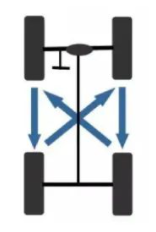
The front tyres are installed in the corresponding rear hubs and the rear tyres are installed on the front hubs right opposite to their position.
Rear-Wheel-Drive/All Wheel Drive Vehicles:
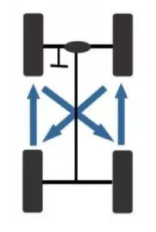
The rear tyres are moved straight ahead to the front axle. And front tyre from the opposite side is installed on the rear axle.
Unidirectional Tyre Rotation:
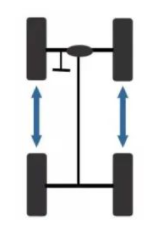
The front tyres are replaced by the rear ones and the rear tyres are bolted on the front hubs right in front of them.
It is recommended that you do a tire rotation after driving about 10,000-15,000 kilometers. Don’t forget to do wheel dynamic balance when changing tires, especially the front wheels, and do four-wheel alignment when necessary, so as to avoid high-speed vibration.







